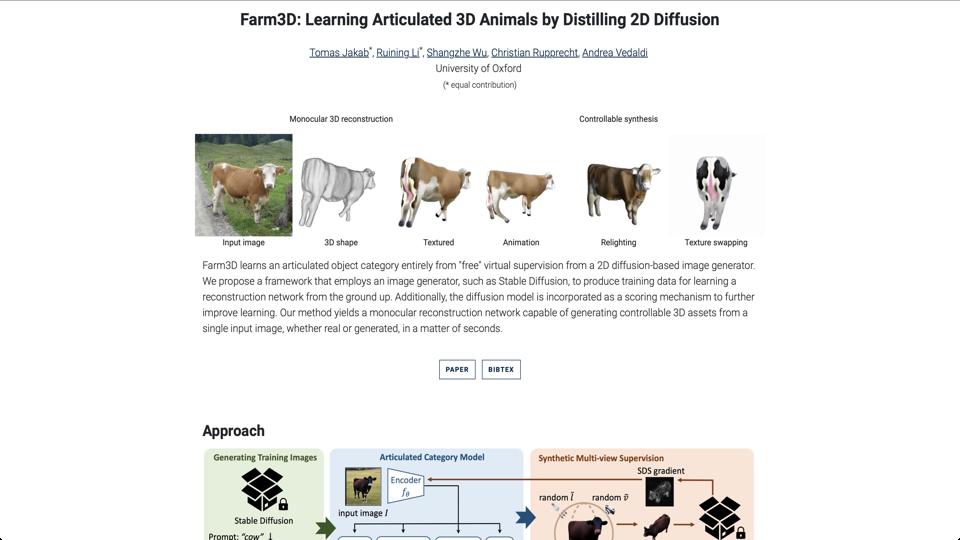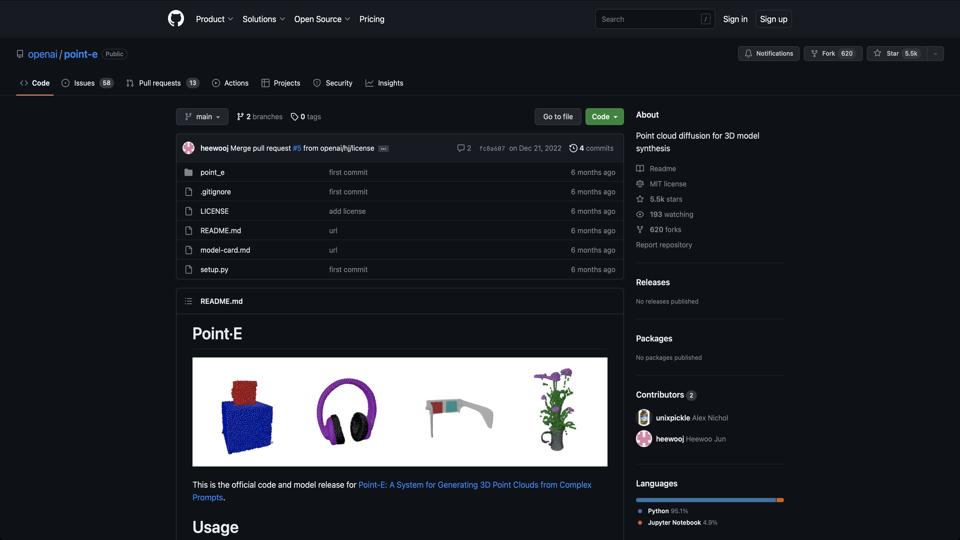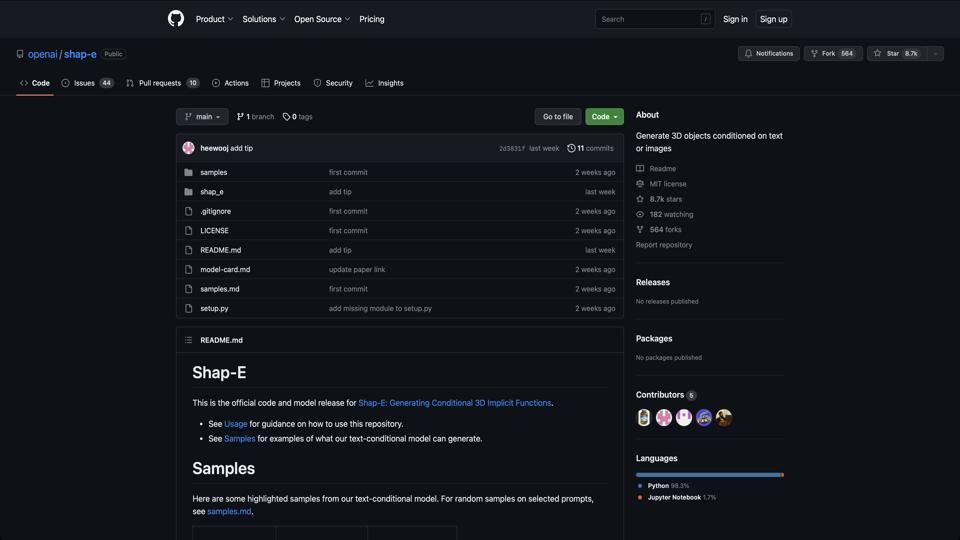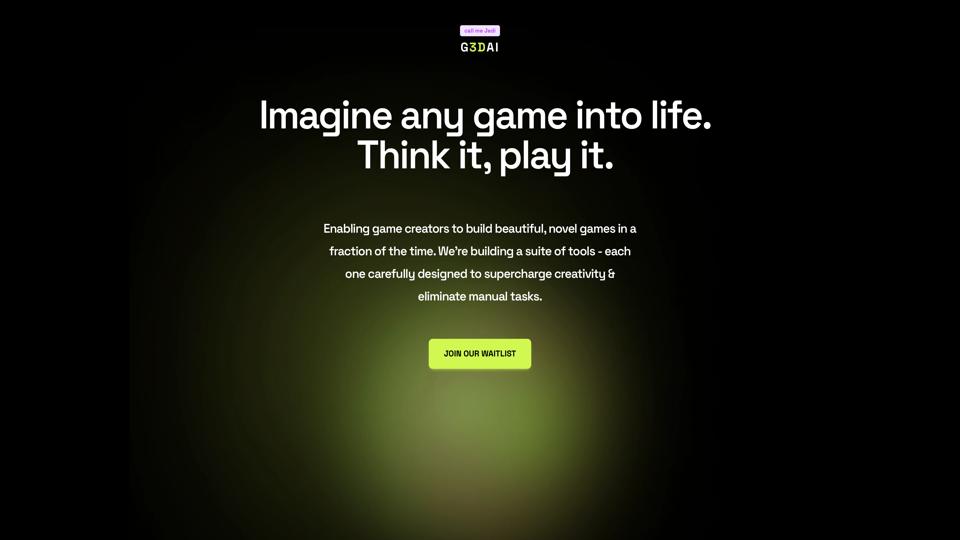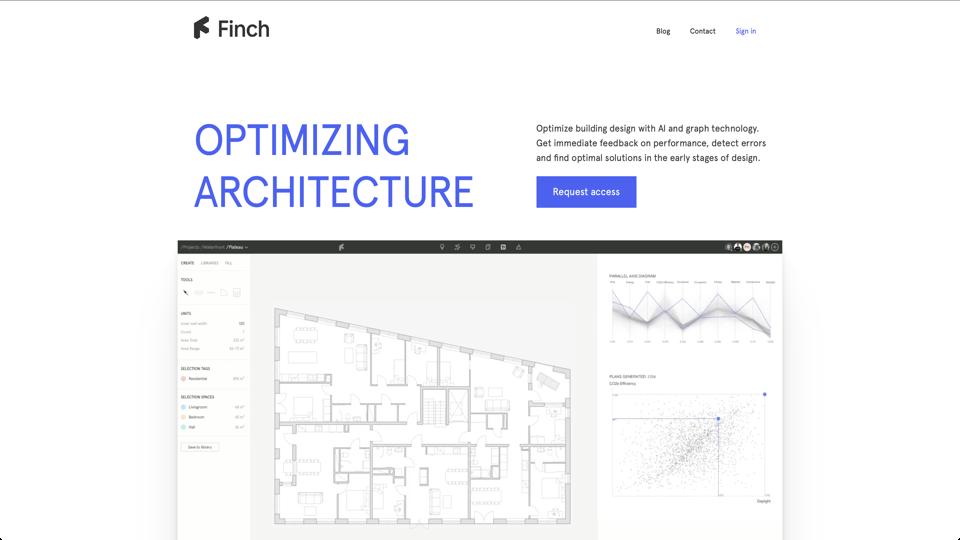Farm3D
Overview of FARM3D
FARM3D is an innovative open-source tool developed by researchers, hosted on GitHub at https://farm3d.github.io/. It leverages advanced AI techniques to generate articulated 3D models of animals from 2D images. Based on the paper “FARM3D: Learning Articulated 3D Animals by Distilling 2D Diffusion,” this tool distills knowledge from 2D diffusion models (like Stable Diffusion) to create high-quality, animatable 3D representations. It’s particularly useful for researchers, developers, and creators in computer vision, graphics, and animation fields. As a research-oriented project, it’s free to use with provided code and demos, though it requires technical setup for full functionality.
Key Features
- 3D Model Generation: Automatically creates articulated 3D models (e.g., of horses, cows, or other animals) from single or multiple 2D images.
- Articulation and Animation: Models include joints and poses, allowing for easy animation and manipulation.
- Distillation from 2D Models: Uses pre-trained 2D diffusion models to infer 3D structures without needing extensive 3D training data.
- Open-Source Code: Full implementation available on GitHub, including Python scripts and Jupyter notebooks for experimentation.
- Interactive Demo: The website features an online demo where users can explore pre-generated models and animations.
- Customization: Supports fine-tuning for specific animal types or custom datasets.
How It Works
FARM3D operates by distilling 2D priors into a 3D reconstruction pipeline. Here’s a simplified step-by-step process:
- Input a 2D image or set of images of an animal.
- The model uses diffusion-based techniques to generate multiple views and infer depth, shape, and articulation.
- It outputs a 3D mesh with rigging, ready for animation in tools like Blender.
- Users can run the code locally with dependencies like PyTorch and Stable Diffusion.
Note: Running the tool requires a GPU for optimal performance, and setup involves cloning the repo and installing requirements.
Pros
- Highly innovative and pushes boundaries in monocular 3D reconstruction.
- Free and open-source, making it accessible for academic and hobbyist use.
- Produces impressive, animatable results with minimal input.
- Well-documented with a project page, paper, and code examples.
- Potential for extensions to other object categories beyond animals.
Cons
- Requires technical expertise in AI and programming to set up and use effectively.
- Limited to specific categories (primarily animals); not generalized to all objects yet.
- Performance depends on hardware; may be slow on non-GPU systems.
- As a research tool, it might have bugs or inconsistencies in outputs.
- No user-friendly GUI; interactions are mostly via code or the basic web demo.
Use Cases
- Research and Education: Ideal for studying 3D reconstruction, diffusion models, and computer vision.
- Animation and Game Development: Quickly generate rigged animal models for prototypes or assets.
- Augmented Reality (AR): Create 3D animals for AR apps or virtual environments.
- Custom Projects: Hobbyists can experiment with generating 3D versions of pets or wildlife photos.
Pricing
FARM3D is completely free as an open-source project. There are no subscription fees, though users may incur costs for cloud computing if running on services like Google Colab or AWS for GPU access.
Conclusion
Overall, FARM3D earns a strong 4.5/5 rating for its groundbreaking approach to 3D model generation. It’s a must-try for AI enthusiasts and professionals in graphics, though beginners might find the learning curve steep. If you’re into cutting-edge AI tools, check out the official site to dive in. For alternatives, consider tools like Instant NeRF or TripoSR, which offer similar 3D-from-2D capabilities.
